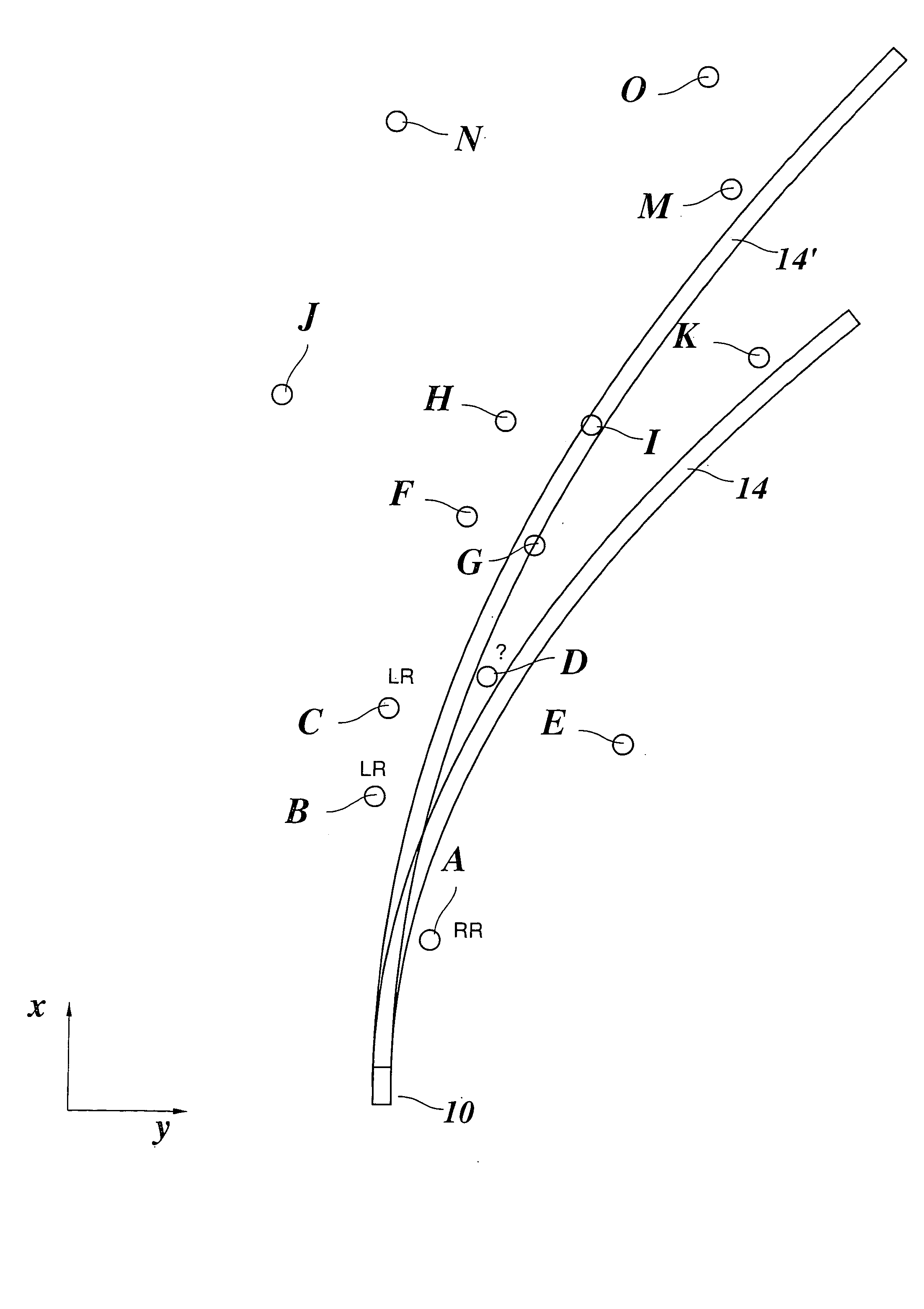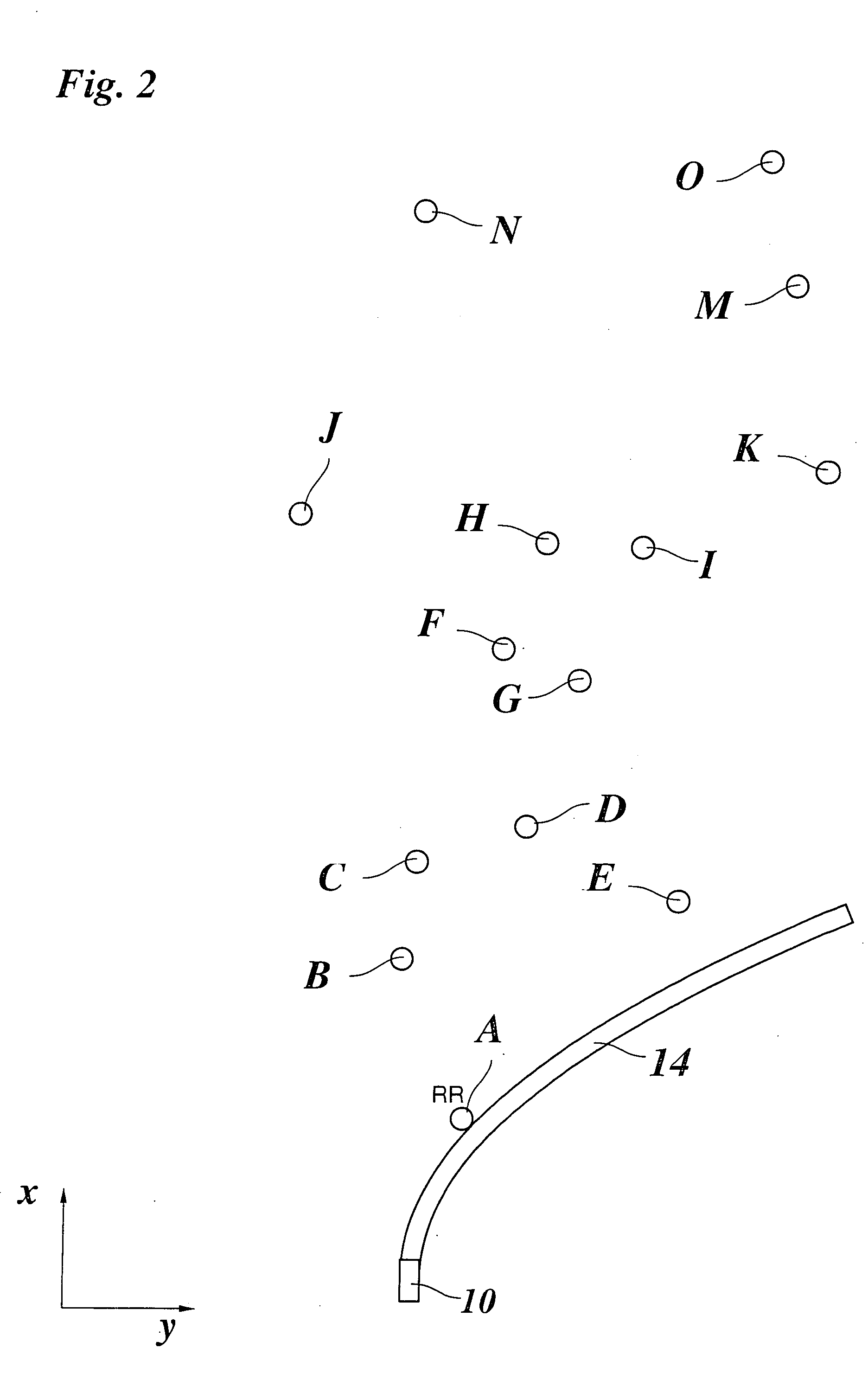Method and device for predicting the course of motor vehicles
a technology for predicting the course of a motor vehicle and a device, which is applied in the direction of scene recognition, navigation instruments, instruments, etc., can solve the problem of not being able to decide on the basis of tracking data alone which stationary target type has been detected, and achieve the effect of accurate path prediction and minor processing complexity
- Summary
- Abstract
- Description
- Claims
- Application Information
AI Technical Summary
Benefits of technology
Problems solved by technology
Method used
Image
Examples
Embodiment Construction
[0045]FIG. 1 shows a top view of a vehicle 10 which is equipped with an ACC system. The ACC system includes a radar sensor as a tracking sensor. Tracking angle range 12 of the radar sensor is indicated with dash-dot lines. The direction of travel of vehicle 10 is indicated by an arrow x. The direction perpendicular to the direction of travel is labeled as y.
[0046] In the tracking range of the radar sensor there are multiple objects A-O which have been identified as stationary targets because their relative speed in relation to vehicle 10 is equal to the speed of vehicle 10 but in the opposite direction. The coordinates (x, y) have been measured for each of objects A-O with the help of the radar system which has angular resolution. The object now is to determine the forecasted path of the road on the basis of the positions of objects A-O, a few of which are located on the roadside but others are beyond the roadside. To this end, functions indicating the shape of the right and left s...
PUM
 Login to View More
Login to View More Abstract
Description
Claims
Application Information
 Login to View More
Login to View More - R&D
- Intellectual Property
- Life Sciences
- Materials
- Tech Scout
- Unparalleled Data Quality
- Higher Quality Content
- 60% Fewer Hallucinations
Browse by: Latest US Patents, China's latest patents, Technical Efficacy Thesaurus, Application Domain, Technology Topic, Popular Technical Reports.
© 2025 PatSnap. All rights reserved.Legal|Privacy policy|Modern Slavery Act Transparency Statement|Sitemap|About US| Contact US: help@patsnap.com



